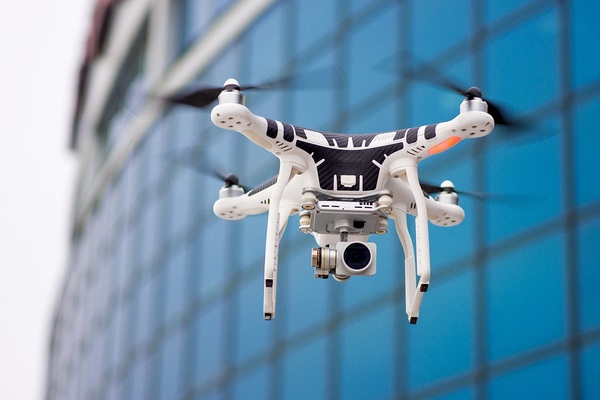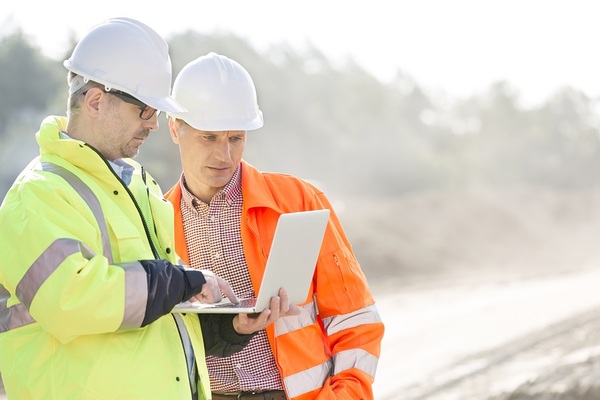The construction industry has always been slow to utilize new technology, but that all changed when profits and safety were involved. By buying upgraded cranes, construction companies realized that they could get more production out of the new devices, and they could also keep their crane engineers safer. Along with keeping the engineers safer, the new technology can also keep other workers and pedestrians outside the job site safe as well.
In 2015, several crane collapses throughout the country got the industry’s attention. When a pedestrian died in a New York City crane collapse, the industry and government took action. Any company working in New York City must now have wind gauges on its cranes to tell when a dangerous gust of wind could threaten the safety of the job. New York City and other places around the country are working with labor unions and construction companies to set a wind speed threshold that makes sense.

New technology is making the construction industry safer.
Drones
Construction companies have only started recently to utilize drones to get more accurate looks at projects in progress, track shipments as they enter the site, and keep an eye on worker productivity. Drones are able to capture hours of video that is safely transmitted and stored to the cloud for later use. Drones have helped construction companies to create 3D models of projects in progress that have become invaluable in monitoring progress, finding construction errors, and helping to correct safety issues.
Drones also play a big role in the new wave of safety technology in the construction industry. Construction companies are using drones to inspect areas that are normally dangerous to humans. Workers no longer have to make dangerous climbs or head into dangerous areas to do readings that are critical to the project. Instead, companies are using drones to do those readings and preventing the possibility of an accident even occurring.
Drones are also capturing information that can show how an accident happened and helping safety officers to prevent accidents in the future. Drones are offering vital information for injury lawsuits that had never been available before, and they are giving more accurate accounts of worker compensation injuries to be used when the worker’s compensation board makes its decision. Drones continue to advance and offer safety options to construction companies that are revolutionizing the industry in many different ways.
Wearables
One of the technological areas that is innovating safety in the construction industry at a rapid pace is wearable technology. Wearables include cameras and sensors that can help prevent accidents and offer critical insight into accidents after they occur that was never available before.
Wearable cameras can show exactly how an accident happened in enclosed areas, and safety managers use that information to alter safety procedures. Cameras can also show project supervisors when workers are engaged in improper activity that could be detrimental to safety and put an end to that activity before someone gets hurt.
Wearable sensors can tell supervisors where employees are located and create working zones that give off audible alarms or lights to let other workers know when someone is in their area. This is an effective way to put an end to the types of accidents that occur on job sites when workers have no idea what is around the corner. Instead of a worker driving a forklift hitting another worker who has just entered the work zone, the forklift driver will be able to hear or see alarms to let them know that someone is close by.
These sensors can also take photos and collect worker movement data that can be critical in re-creating the accident to help devise ways to prevent it from happening again. This data can also be helpful in establishing negligence in the event of an accident, and it can also be useful in determining if a worker was responsible for a potential worker’s compensation accident.
For workers involved with high-voltage electrical equipment, there are sensors that can let them know when they are close to a source of electricity such as a live line. When the weather is bad and electrical service has been damaged, workers often head out into the conditions without really being able to see the downed lines and transformers. These sensors make it easier for workers to remain safe in even the worst weather conditions.
Health sensors can alert job supervisors when workers are involved in a medical emergency, and they can also indicate when a worker is involved in a physically dangerous activity. This wearable technology can all be contained inside a lightweight safety vest to prevent the technology from hindering workers’ attempts at productivity. These wearables are also allowing companies to improve their safety culture more rapidly than ever before, and that is saving lives.
Instant Communication
Construction safety managers find it easier to keep site supervisors and workers updated on safety information thanks to evolving technology. When the plans for a project have been changed, safety managers can get these changes to supervisors in the field immediately to avoid any worker issues.
Safety managers can also relay current and critical safety information to workers and supervisors when the information can be helpful, and not after an accident has already happened. Many construction companies have set up areas with large televisions where workers can access critical safety data and have the information they need to get their jobs done without being injured.

Wearable technology can help keep workers safe and projects moving along.
Stay Updated On Safety Innovations
Focusing on safety saves your company money and helps to keep your employees productive. If you are interested in learning more about safety, then start a course with PDH Contractors and get the latest information that you need. With PDH Contractors, you will access plenty of current construction information, and you can also stay updated on your licensing and certification renewal information as well. PDH Contractors has information as it applies to all 50 states, and it also allows you access to critical industry information that will help you to keep your employees safe and keep your projects moving along at a profitable pace.
